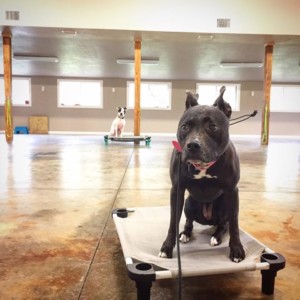Even more important than how much time you spend training your dog is how consistently you reinforce your dog’s training. A lack of consistency can immediately ruin any and all work that you have done with your dog during a training session. If you are experiencing problems with your training regimen, you might be able to trace it back to an inconsistency in your own behavior, not an issue with your dog. For example, if you scold your dog for eating food that falls on the floor, but then routinely feed him by hand from the table, he is obviously going to be very confused about when it is and is not okay to eat human food.

We often hear many owners providing themselves with qualifying statements, like, “I don’t mind if my dog sits on the couch, but I hate when he gets mud on it,” or “It’s fine for my dog to sleep in the bed with me, but I don’t want him on the bed when I’m gone.” For dogs, who see things in very clear “wrong” or “right” or “black” and “white” terms, they will only become confused when sometimes they are encouraged to do something and other times are punished for doing that thing. Your dog will not understand the intricacies of having or not having muddy paws or the difference between why he can sit on your bed when you’re home and why he cannot when you are not home. He will not understand the variable you are using to that make some actions okay sometimes and not okay other times.
 There is often another layer of inconsistency for dogs who live in homes with more than one person. If one or more members of the family is undermining your training, this can be very confusing for the dog. Even two people using different commands for the same action can be enough inconsistency to upset a training regimen. More often, members of the same family will have different opinions about whether or not the dog should be allowed on the furniture or be fed from the table.
There is often another layer of inconsistency for dogs who live in homes with more than one person. If one or more members of the family is undermining your training, this can be very confusing for the dog. Even two people using different commands for the same action can be enough inconsistency to upset a training regimen. More often, members of the same family will have different opinions about whether or not the dog should be allowed on the furniture or be fed from the table.
The first step is to create consistency in your own home. If you and your dog are the only members of your household, you need to decide what the rules are and stick to them without conditions. If you don’t want him to jump on the furniture when you are not home, he can’t jump on the furniture when you are home, either.
If you do have a family, you and your family will have to sit down and decide what the rules are then get a commitment from everyone to stick to them. This can be difficult when you have younger children who want the puppy to sit on their laps or who have a hard time refusing that sweet stare, begging for a little bit of their dinner.
It’s also important to be consistent when you have relative strangers in your home. Many times, training goes right out the window when a new person steps into the house. The rules for company have to be the same as rules for the family. Take the time to correct your dog appropriately even when you do have company present. Many people skip this step because it is inconvenient to work with the dog when they have friends over, but this is one of the most crucial aspects of being consistent with your dog’s training.




